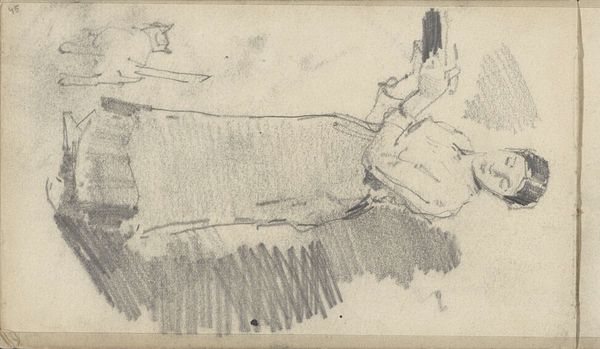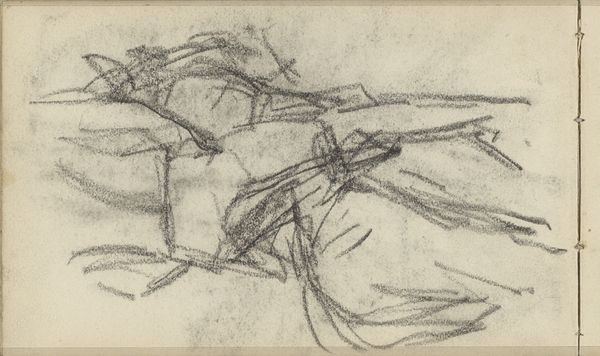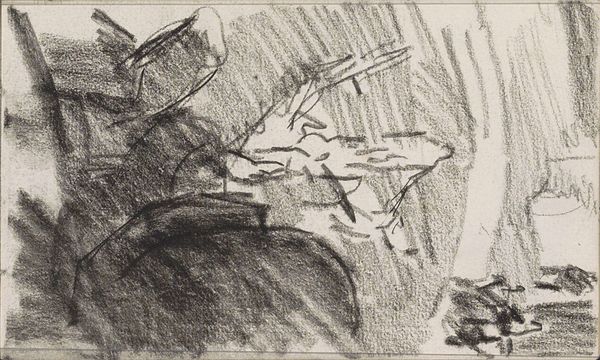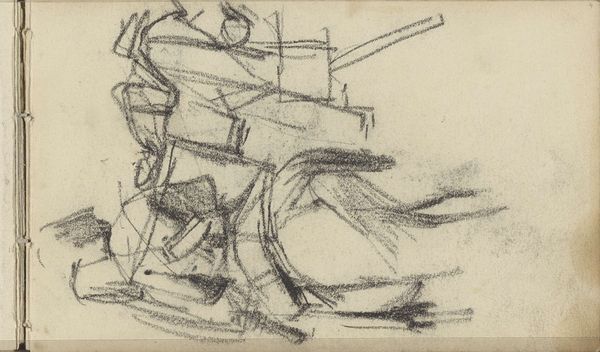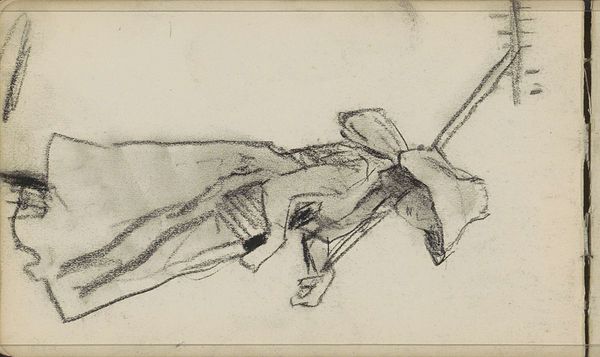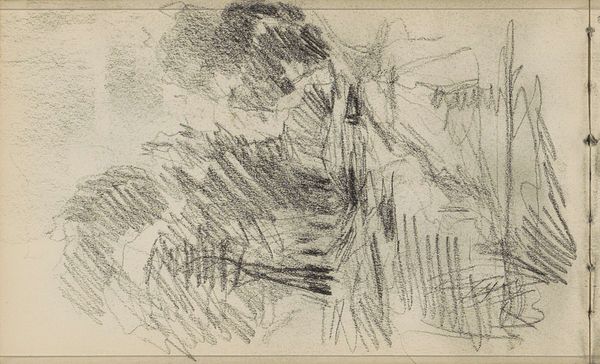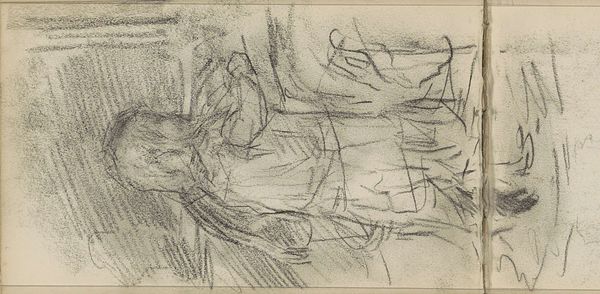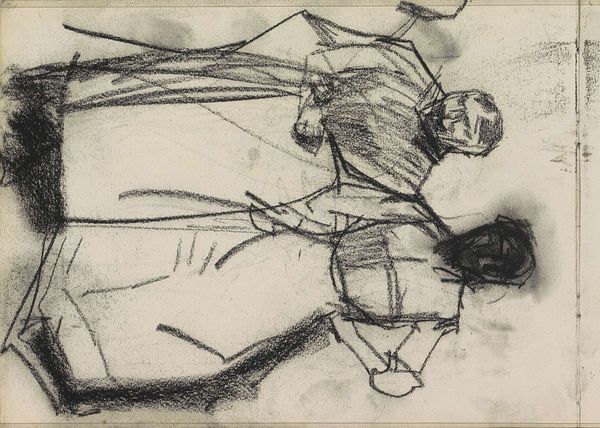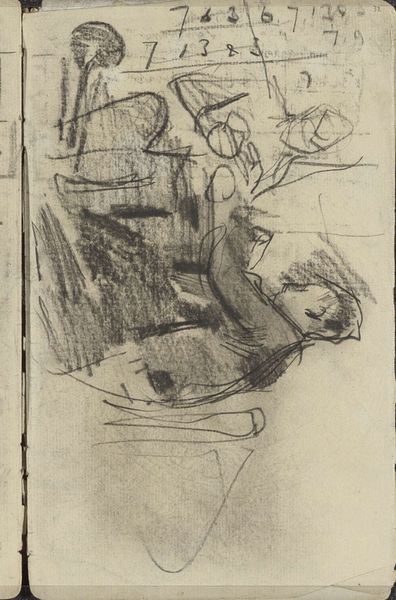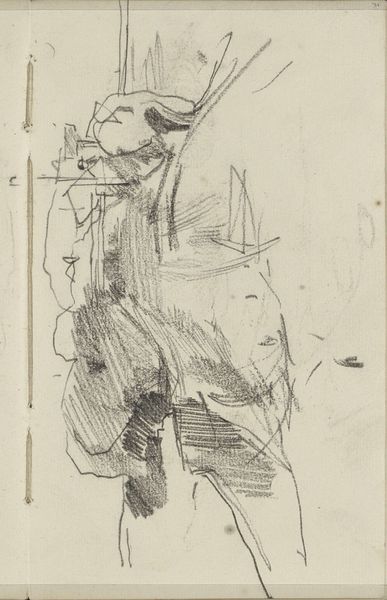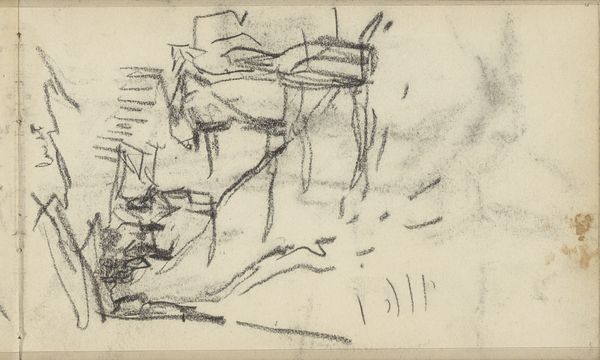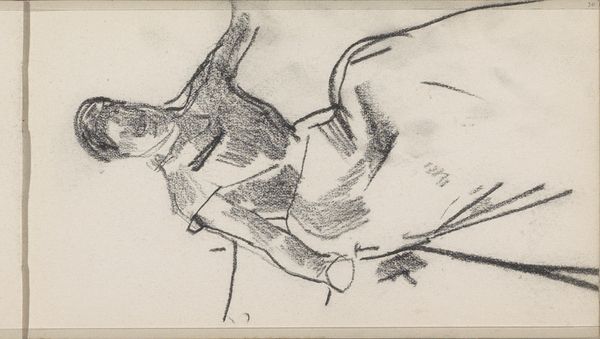
drawing, paper, pencil
#
drawing
#
amateur sketch
#
toned paper
#
light pencil work
#
impressionism
#
pencil sketch
#
incomplete sketchy
#
landscape
#
paper
#
personal sketchbook
#
ink drawing experimentation
#
pen-ink sketch
#
pencil
#
horse
#
sketchbook drawing
#
sketchbook art
#
realism
Copyright: Rijks Museum: Open Domain
Curator: Breitner's "Paard," created between 1884 and 1886, is a pencil drawing currently held at the Rijksmuseum. What strikes you most about it? Editor: The starkness. There’s a real rawness in those pencil lines, a sense of immediate, unvarnished observation. It feels very direct. Curator: Precisely. Breitner was interested in capturing fleeting moments of everyday life. His connections to the art world allowed him certain privileges. During this time, the Netherlands was a class divided society, especially in the larger cities such as Amsterdam where he was living and working. This kind of quick sketch was part of his process, often made outdoors as a precursor to larger paintings. Editor: I notice how he's caught the weight and the form of the horse so efficiently, but not perfectly, relying on shading for volume rather than tight outlines. I find that looseness quite appealing, the symbol of animal is not idealizing this subject but offering the opportunity to feel something in a less conventional depiction. Curator: It certainly departs from traditional equestrian portraits. It reflects the rise of Impressionism, its emphasis on capturing the essence of a scene, with all the new artistic techniques employed. I see this as a subtle political shift; the artist moves away from serving solely the elite by focusing on every day realities. Editor: That is a fair assessment. Perhaps then, that loose sketching style also evokes a sense of transience – everything is moving and unstable. You have so many horses during this period tied to commerce and the movement of goods that seeing one at rest creates a quiet contemplation about what exactly that image evokes within society and this composition. Curator: I agree. Considering Breitner's focus on the working classes, this work fits into the artistic democratization movement occurring at that time, in an ever-expanding urban environment, away from the ideals of pastoral life or classical heroes. Editor: Seeing this drawing with those historical contexts helps unlock deeper understanding, it enriches my experience beyond just seeing a simple sketch. Curator: Indeed, and for me, understanding how it both reflected and shaped society at the time provides context for appreciating Breitner’s choices, especially how he made an impact upon how artists could interact with the socio-economic system and become critical voices.
Comments
No comments
Be the first to comment and join the conversation on the ultimate creative platform.
